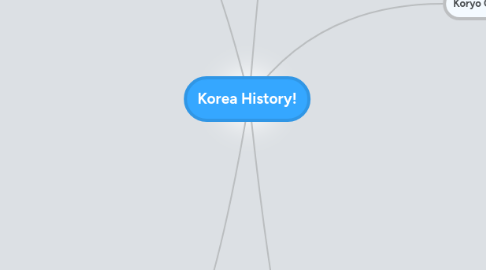
1. Choson
1.1. Early Yi Dynasty
1.1.1. New Political and Military Patterns
1.1.1.1. Political Structure
1.1.1.2. Administrative Districts and Local Governments
1.1.1.3. Military Organizations
1.1.1.4. Early Domestic Disturbances & The Japanese Problem
1.1.2. Social & Economic Patterns
1.1.2.1. Social Structure
1.1.2.2. Early Economic Life
1.1.3. Early Cultural Development
1.1.3.1. Confuciaism & Buddhism
1.1.3.2. Educational Development and Civil Service Examinations
1.1.3.3. King Sejong and Cultural Development
1.1.3.4. Early Scholarship
1.1.3.5. Poetry and Song
1.1.3.6. Painting
1.1.3.7. Ceramic Art
1.1.3.8. Confuian Ritual Music and Dance
1.1.4. Decline of the Yi Dynasty
1.1.4.1. The Literati Purges and Their Aftermath
1.1.4.2. The Rise of Factional Strife
1.1.4.3. Rebellions
1.1.4.4. Foreign Invasions
1.1.5. Reform Advocates and New Trends
1.1.5.1. Self-Awakening and the Reform Movement
1.1.5.2. Reform Kings
1.1.6. The Development of Popular Culture
1.1.6.1. Popular Literature
1.1.6.2. The Rise Of New Painters
1.1.6.3. The Development of Folk Culture
1.1.7. Korea in the Early Nineteenth Century
1.1.7.1. Political and Social Situation
1.1.7.2. A New Religious Movement
1.2. The Twilight of the Yi Dynasty
1.2.1. Korea On the Eve Of the Modern Age
1.2.1.1. The New King, The Regent, and the Reform
1.2.1.2. Korea's Encounter With The Western Powers
1.2.1.3. The National Debate
1.2.2. The Opening o Korea, Early Modernization, and Domestic Politics
1.2.2.1. New Relations with Japan
1.2.2.2. The Rise of the Progressives
1.2.2.3. Modernization and Conservative Reaction
1.2.2.4. The Opening of Korea To the West
1.2.3. Domestic Upheavel and Foreign Rivalry
1.2.3.1. The Im Military Insurrection
1.2.3.2. The Coup d'Etat of the Progressives
1.2.3.3. Modern Development
1.2.3.4. The Uprising of the Tonghaks and Peasants
1.2.4. The Critical Decade
1.2.4.1. The Sin-Japanese War and its Impact
1.2.4.2. The Kabo Reform
1.2.4.3. Death of Queen Min and the King's flight to the Russian legation
1.2.4.4. The Rise of New Nationalists
1.2.5. The Demise of the Yi Dynasty and Korean Independence
1.2.5.1. Korea's Loss of its Sovereignty
1.2.5.2. Struggle for National Survival
2. Japanese!
2.1. Early Japanese Colonial Rule
2.1.1. The Japanese Colonial Government and Administrative Districts
2.1.2. Cultural and Educational Policy
2.1.3. The Impact of Early Economic Policy
2.2. The March First Movement and Its Aftermath
2.2.1. The March First Movement
2.3. The Last Phase Of Japanese Colonial Rule
2.3.1. Japanese Rule in the Critical Times
2.4. The Nationalist Movement at Home and Abroad
2.4.1. New Nationalist And Reform Movements After 1919
2.4.2. Inellectuals, Writers, and the Press
2.4.3. The United Front, Students, Farmers, and Laborers
2.4.4. The Nationalist Movement Abroad
2.5. Korea at the End of Japanese Colonial Rule
3. Original Koryo Outline
3.1. Koryo Under Government Rule
3.1.1. Introduction To Koryo
3.1.2. Wang Kom's Rise To Power
3.1.3. List Of Rulers and Their Accomplishments
3.1.4. Khitan Koryo Wars
3.1.5. Society and Culture
3.2. Koryo Under Miltary Rule
3.2.1. Military Take Over
3.2.2. Mongol Invasions
3.2.3. Mongol Rule Over Koryo
3.2.4. Death Of Koryo
3.2.5. Rise Of New-Confuscianism
4. Korea Divided
4.1. The Liberation, Partition, and the Allied Occupation
4.1.1. Allied Decisions on Korea
4.1.2. The Soviet Occupation Of North Korea
4.1.3. US Occupation of South Korea
4.1.4. The Moscow Agreement and Its Impact
4.2. North Korea Under Soviet Occupation
4.2.1. Political and Military Development
4.2.2. Economic and Social Change
4.2.3. Cultural and Educational Change
4.3. South Korea Under American Military Rule
4.3.1. Political and Military Development
4.3.2. Economic and Social Conditions
4.3.3. Cultural and Educational Development
4.4. The Emergence of Two Korean States
4.4.1. The US-USSR Joint Commission
4.4.2. The UN Intervention
4.4.3. The Establishment of the Two Korean States
4.5. The Two Koreas in the Early Stages
4.5.1. Early Aspects of North Korean Development
4.5.2. The State and Ruling Organs
4.5.3. South Korea Before the Korean War
4.5.4. The State, Government, and Defense Structure
5. Koryo Outline New and Improved
5.1. New Political and Military Patterns
5.1.1. Political Structure
5.1.2. Administrative Districts and Local Government
5.1.3. Early Foreign Problems
5.2. Social and Economic Patterns
5.2.1. Social Structure and Practices
5.2.2. Economic Change
5.3. Cultural Development
5.3.1. Art and Architecture
5.3.2. Buddhism in Koryo
5.3.3. Educational Development, the Civil Service Examination System, and Scholarship
5.3.4. Music and Dance
5.3.5. Ceramic Art
5.4. Rebellion, Power Struggle, and Uprisings
5.4.1. Treason and Rebellion
5.4.2. Coup d'Etat of Military Officers
5.5. Mongol Invasions and the Fall of Koryo
5.5.1. The Mongol Invasions
5.5.2. The Rebellion of the Sambyolcho'o
5.5.3. The Mongol Domination and Its Effects
5.5.4. Nationalistic Movement
5.5.5. The Fall Of the Koryo Dynasty

